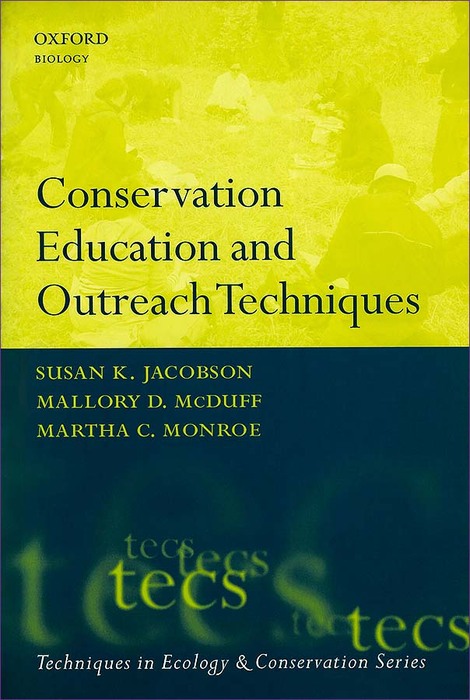Conservation Education and Outreach Techniques 2006
Conservation Education and Outreach Techniques 2006-需求單
專業研究用書,無法提供教師樣書
內容簡介
The conservation of biological diversity depends on people's knowledge and actions. This book presents the theory and practice for creating effective education and outreach programs for conservation. Jacobson, McDuff, and Monroe describe an exciting array of techniques for enhancing school resources, marketing environmental messages, using mass media, developing partnerships for conservation, and designing on-site programs for natural areas and community centers. Vivid case studies from around the world illustrate techniques and describe planning, implementation, and evaluation procedures, enabling readers to implement their own new ideas effectively. Conservation Education and Outreach includes twelve chapters illustrated with numerous photographs showing education and outreach programs in action, each incorporating an extensive bibliography. Helpful text boxes provide practical tips, guidelines, and recommendations for further exploration of the chapter topics. This book will be particularly relevant to conservation scientists, resource managers, environmental educators, students, and citizen activists. It will also serve as a handy reference and a comprehensive text for a variety of natural resource and environmental professionals.
作者簡介
Dr. Susan K. Jacobson is a professor in the Department of Wildlife Ecology and Conservation and the director of the Program for Studies in Tropical Conservation at the University of Florida. She teaches courses on environmental communication and natural resource management, and conducts research on the human dimensions of wildlife conservation. She earned her Ph.D. degree in resource ecology from Duke University and has published over a hundred journal articles, book chapters, reports, and books dealing with environmental management education and natural resource conservation in the U.S., Latin America, Africa, and Southeast Asia. Her 1999 book, Communication Skills for Conservation Professionals, was published by Island Press. Her edited volume, Conserving Wildlife: International Education And Communication Approaches, was published in 1995 by Columbia University Press.
Dr. Mallory McDuff teaches environmental education and communication at Warren Wilson College in Asheville, NC. She received her B.S. in Human Biology and English from Vanderbilt University and a Ph.D. from the University of Florida in the Department of Wildlife Ecology and Conservation with a focus on environmental education and the human dimensions of natural resource conservation. Dr. McDuff works with undergraduate students to integrate education and outreach into the environmental actions of the 1,000 acre college campus, community groups, local schools, and municipalities. She has developed environmental education programs in places ranging from the estuaries of the southeastern U.S. to the rainforests of Central African Republic. She has published numerous journal articles and book chapters on conservation education, as well as environmental writings in newspapers and National Public Radio broadcasts.
Dr. Martha Monroe is an extension specialist in natural resources education and associate professor in the School of Forest Resources and Conservation at the University of Florida in Gainesville. She provides support to a variety of environmental education programs and teaches courses in conservation behavior, communication and environmental education program development. Her work in environmental education spans over 25 years of teaching youngsters, facilitating teacher workshops, developing curriculum, and evaluating programs. She holds a BS, MS, and Ph.D. in Natural Resources from the University of Michigan. Dr. Monroe has conducted teacher workshops, surveyed programs, and led EE training programs in Botswana, Namibia, Jordan, Russia, Tonga, Fiji, Malaysia, Chile, and Thailand.
目次
Intro
Acknowledgements
Contents
Introduction
1. Designing successful conservation education and outreach
2. Learning and teaching with adults and youth
3. Changing conservation behaviors
4. Conservation education in the schools
5. Making conservation come alive
6. Using the arts for conservations
7. Connecting classes and communities with conservation
8. Networking for conservation
8.1 Environmental clubs and groups
9. Marketing conservation
10. Getting out your message with the written word
11. Taking advantage of educational technology
12. Designing on-site activities
References
Index

